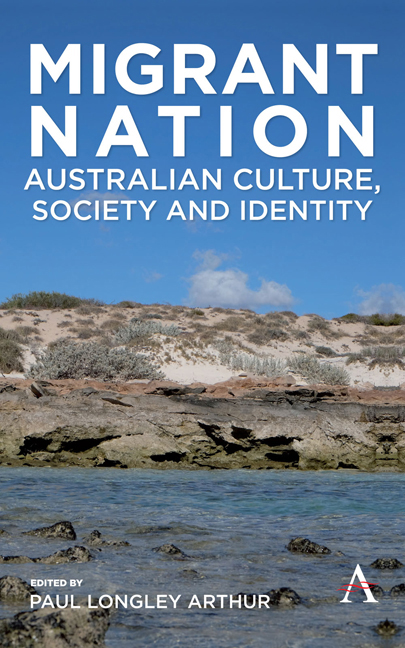Book contents
- Frontmatter
- Contents
- List of Figures
- 1 Introduction: Transcultural Studies in Australian Identity
- 2 Remembering Aboriginal Sydney
- 3 Files and Aboriginal Lives: Biographies from an Archive
- 4 Writing, Femininity and Colonialism: Judith Wright, Hélène Cixous and Marie Cardinal
- 5 The Staging of Social Policy: The Photographing of Post-War British Child Migrants
- 6 Writing Home from China: Charles Allen's Transnational Childhood
- 7 Australian? Autobiography? Citizenship, Postnational Self-Identity and the Politics of Belonging
- 8 A Nikkei Australian Story: Legacy of the Pacific War
- 9 Displaced Persons (1947–52) in Australia: Memory in Autobiography
- 10 Between Utopia and Autobiography: Migrant Narratives in Australia
- 11 Vietnamese–Australian Life Writing and Integration: The Magazine for Multicultural and Vietnamese Issues
- 12 Heroes, Legends and Divas: Framing Famous Lives in Australia
- List of Contributors
- Index
5 - The Staging of Social Policy: The Photographing of Post-War British Child Migrants
Published online by Cambridge University Press: 10 May 2018
- Frontmatter
- Contents
- List of Figures
- 1 Introduction: Transcultural Studies in Australian Identity
- 2 Remembering Aboriginal Sydney
- 3 Files and Aboriginal Lives: Biographies from an Archive
- 4 Writing, Femininity and Colonialism: Judith Wright, Hélène Cixous and Marie Cardinal
- 5 The Staging of Social Policy: The Photographing of Post-War British Child Migrants
- 6 Writing Home from China: Charles Allen's Transnational Childhood
- 7 Australian? Autobiography? Citizenship, Postnational Self-Identity and the Politics of Belonging
- 8 A Nikkei Australian Story: Legacy of the Pacific War
- 9 Displaced Persons (1947–52) in Australia: Memory in Autobiography
- 10 Between Utopia and Autobiography: Migrant Narratives in Australia
- 11 Vietnamese–Australian Life Writing and Integration: The Magazine for Multicultural and Vietnamese Issues
- 12 Heroes, Legends and Divas: Framing Famous Lives in Australia
- List of Contributors
- Index
Summary
A large number of photographs were taken in the late 1940s and 1950s by the Department of Information (later Australian News and Information Bureau) to promote post-war migration to Australia. These photos were of new arrivals, family groups, single adults and sponsored child migrants from the United Kingdom. With the increase in unaccompanied minors coming to Australia, the federal government enacted the Immigration Guardianship of Children Act of 1946, which ensured that the Minister for Immigration and Citizenship (then Arthur Calwell) would assume legal guardianship of unaccompanied children under 21 years of age. The child migration schemes were operated by Australian government bodies and nongovernmental agencies. The two biggest charity-based welfare contributors to the schemes were the Fairbridge Society and Dr Barnardos Homes (Parliament of Australia 2001, 47).
In 2001 the Australian government released a Senate report, Lost Innocents – Righting the Record, on the abuse and neglect of child migrants and other children placed in institutional care between 1920 and 1967. The subsequent 2004 Senate Inquiry Forgotten Australians: A Report on Australians Who Experienced Institutional or Out-of-Home Care as Children, which also included children born in Australia together with ‘the Stolen Generations’ (Aboriginal children who were forcibly removed from their families) made a number of recommendations, one of which was a national apology. By acknowledging that the Commonwealth had failed in its legal and moral obligations to these children, it was hoped that recognition of past injustices and their experiences as part of official history would assist in their ongoing healing process. In 2009, following its national apology to the Stolen Generations (13 February 2008), the recently elected Rudd Labor Government, as part of its reformist agenda, formally apologized to those who are now referred to as the ‘forgotten Australians’ or ‘former child migrants’.
Since the Senate inquiry, photographs taken of children in care have begun to re-emerge and to be recycled in the public domain through exhibitions, research projects and databases dedicated to reconnecting the subjects with their lost histories. Many of the images have become sites of contested history and social memory. Who are the children in these photographs? What do they remember? Why were they photographed, and who took the photographs?
- Type
- Chapter
- Information
- Migrant NationAustralian Culture, Society and Identity, pp. 69 - 90Publisher: Anthem PressPrint publication year: 2017



